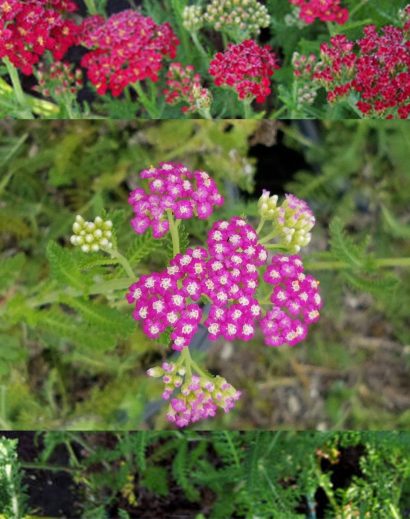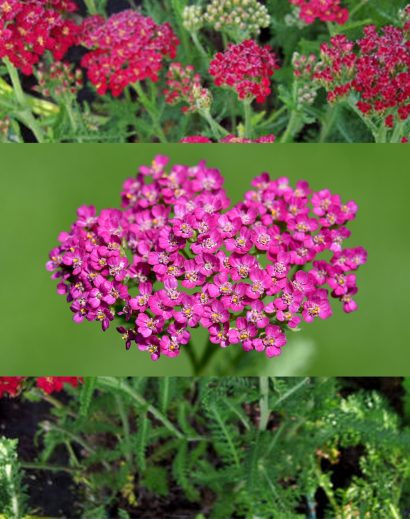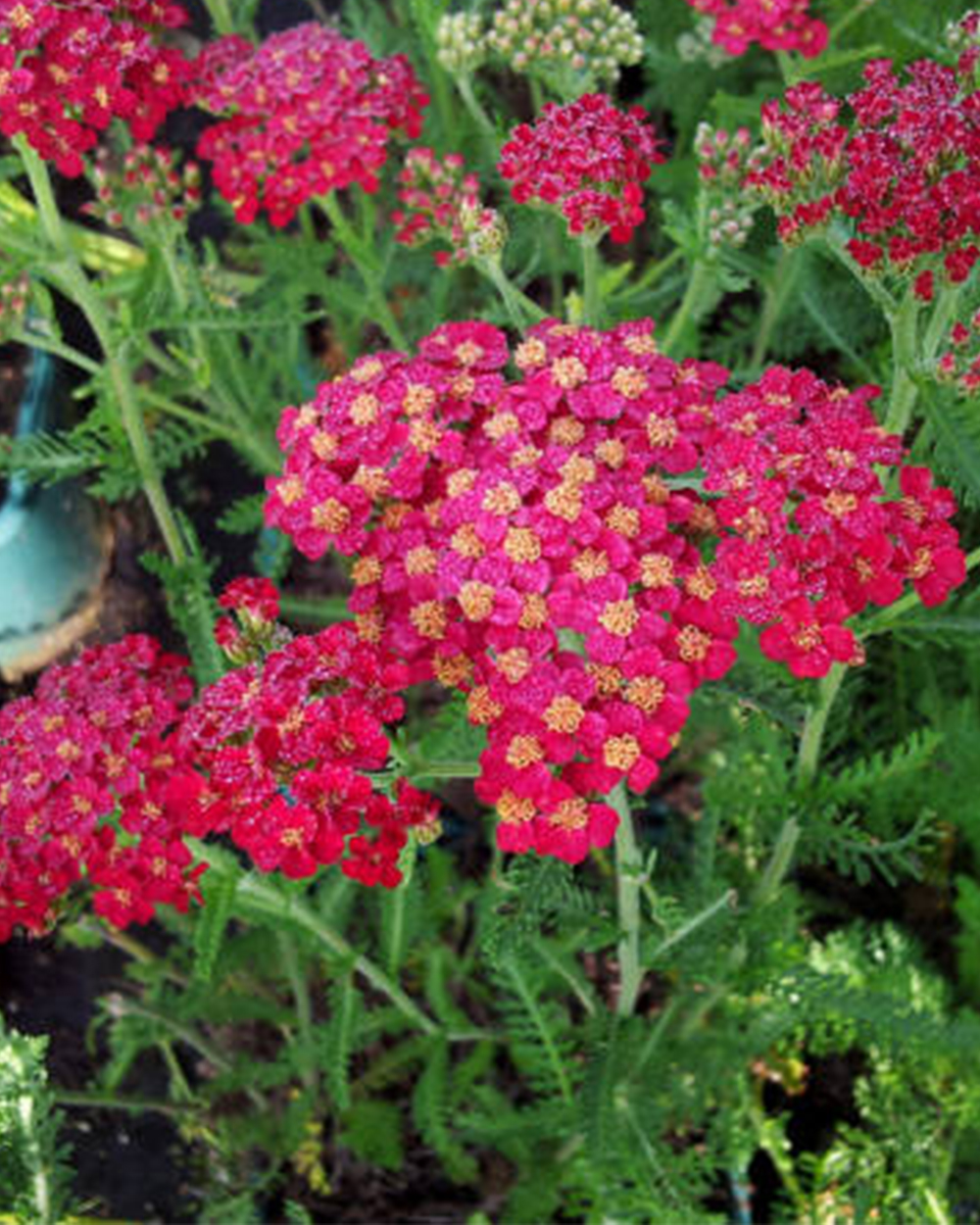Pink yarrow, scientifically known as Achillea millefolium, is a delightful herbaceous perennial plant that belongs to the Asteraceae family. It is widely recognized for its striking clusters of tiny, flat-topped, pink or rose-colored flowers, which are held above a feathery and finely divided foliage. Here’s a more detailed description of pink yarrow:
- Flowers: The most distinctive feature of pink yarrow is its vibrant and densely packed flower heads. Each flower head consists of numerous small, five-petaled flowers with a characteristic pink or rose hue. These flower heads are typically 2-4 inches (5-10 cm) in diameter and are arranged in flattened clusters called corymbs at the top of tall, erect stems.
- Foliage: Pink yarrow’s leaves are fern-like and highly divided, giving them a delicate, lacy appearance. They are typically a deep green color and grow in a basal rosette at the base of the plant. The leaves are aromatic when crushed and are finely divided into many thread-like segments.
- Height: Pink yarrow plants can vary in height, but they typically reach a height of 1 to 3 feet (30 to 90 cm) when in bloom. The stems are erect and usually unbranched.
- Habitat: This species is native to Europe and Asia but has become naturalized in many parts of North America. It can be found in a variety of habitats, including meadows, fields, roadsides, and disturbed areas.
- Blooming Season: Pink yarrow typically blooms in late spring to early summer, producing a profusion of flowers that can last for several weeks. However, some cultivars may bloom into the summer months.
- Cultivars: There are numerous cultivated varieties of pink yarrow, with varying shades of pink, from pale pastels to deeper rose colors. Some popular cultivars include ‘Cerise Queen,’ ‘Strawberry Seduction,’ and ‘Paprika.’
- Wildlife Attraction: The nectar-rich flowers of pink yarrow attract pollinators such as bees, butterflies, and other beneficial insects to the garden. Additionally, the plant’s feathery foliage provides cover and habitat for small insects and arthropods.
- Medicinal and Folklore Uses: Yarrow has a long history of medicinal and folklore use. It has been used for its purported healing properties, including as a remedy for wounds, fever, and digestive issues. However, its medicinal use should be approached with caution and preferably under the guidance of a qualified herbalist or healthcare provider.
In landscaping and gardening, pink yarrow is valued for its beauty and ability to attract pollinators. It’s often planted in wildflower gardens, cottage gardens, and meadow-style landscapes. Its striking appearance and adaptability make it a popular choice for adding color and texture to gardens.





Reviews
There are no reviews yet.